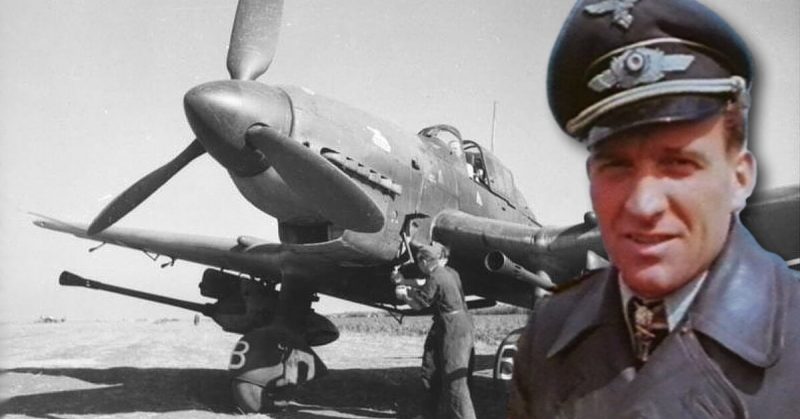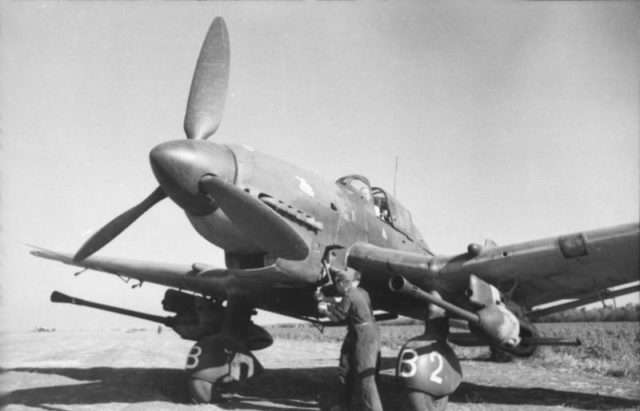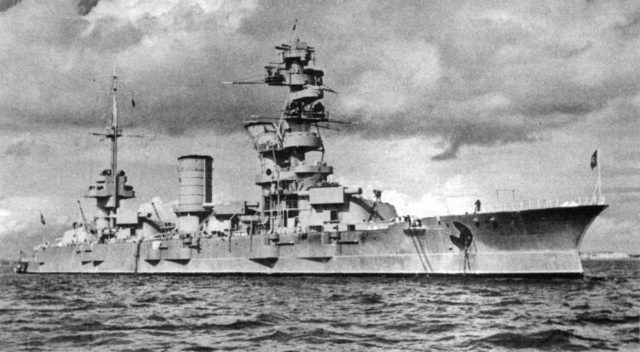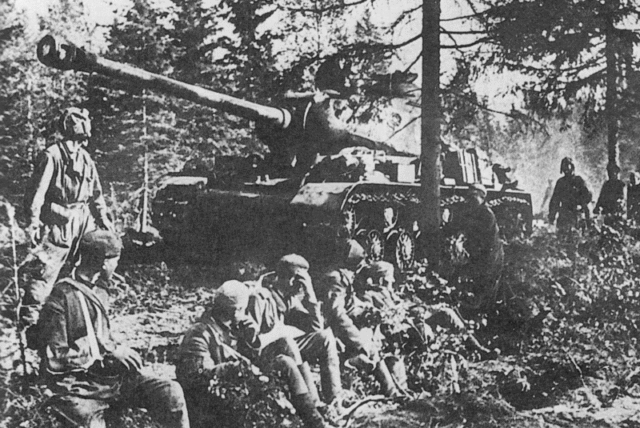Hans-Ulrich Rudel – The Flying Tank Buster Who Flew More Than 2,000 Missions And Killed Over 500 Tanks

| SHARE:FacebookTwitter |
Hans-Ulrich Rudel was shot down 30 times during his 2,530 missions. He destroyed one battleship, one cruiser, one destroyer, 70 landing craft, 800 vehicles, 150 gun positions, 519 tanks and nine aircraft. His story is simply incredible.
Like so many successful soldiers during World War Two, Rudel showed a great aptitude for adventure, risk and daring from an early age. His first brush with injury came when he was just eight years old as he jumped off a roof with an opened umbrella in an attempt to fly. It earned him a broken leg, but that was small fry in comparison with what would come later on.
Rudel initially came to prominence within the Sturzkampfgeschwader 2 (StG.2), flying Stuka dive bombers in blackout-inducing dives and at speeds that other men would never consider – but when he first joined the force his commanders thought he didn’t fit into the squad of men.
As the son of a Lutheran minister, Rudel didn’t take part in many of the activities that life revolved around for the fighting men. “He doesn’t smoke, drinks only milk, has no stories to tell about women and spends all his free time playing sports. Senior Officer Cadet Rudel is a strange bird,” wrote one of his instructors.
And for a man who spent most of the first half of the war sitting in the backseat of a reconnaissance plane, or not flying at all, the numbers Rudel racked up are truly astonishing.
He flew no combat missions at all throughout the Battle of Britain or the Baltic and Cretan conflicts, and only got his first taste of life in the front seat when he was called on to fight during Operation Barbarossa against the Soviet Union.

His first engagement was against the Russians, who were well aware that the enemy was coming and wouldn’t be intimidated by the wailing sound of the dive bomber. To add even more fuel to the fire, Rudel was tasked with ending the Soviet Dreadnought Marat’s reign of terror over the German forces attacking Leningrad. It had been launching shells a full 18 miles onto the Axis positions surrounding the city, and Rudel was a part of the force sent to stop it.
In just one month, Rudel had flown 100 missions and had proven his worth as one of the best pilots in StG. 2. For this soldier, hitting the target and making sure ammunition didn’t go to waste was of fundamental importance. Because of this, he developed a tendency to dive too low and fly too close to the ground to make sure the correct target was hit.
“I generally dive to too low a level, to be sure of hitting the target and not waste ammunition,” wrote Rudel in his memoirs. His captain agreed, saying: “This crazy fellow will have a short life.”
The Marat was sitting in the Gulf of Finland, and the Stukas were sent to bring down the beast that had been sending hell and fire into the German forces risking life and limb for Operation Barbarossa. The massive, ship busting 1,000lb bomb released by Captain Ernst-Siegfried Steen missed its mark, but true to form the one carried by Rudel was a hit ad exploded on the aft deck.

And then in September 1941 a reconnaissance plane spotted the behemoth undergoing repairs in Kronstadt Harbor, which was fortified by a dazzlingly large number of guns – over 1,000 on board ships and on land in total. But that didn’t bother Rudel, who was rarely troubled by such trivial information. He set off towards his target with a new, 2,000lb armour piercing bomb and with the steely determination of a man in his element.
The flak from the anti-aircraft guns was so intense that the Stuka formation broke up, and Rudel was left to tail Steen all the way towards the giant ship. Rudel flew so close to the Marat that he could make out the soldiers on the deck, and his bomb penetrated the deck and exploded in an ammunition store, completely blowing the bow off the ship. It was to be the first of many major successes for the daring, brilliant pilot.
But it wasn’t until 1943 that Rudel was invited to join a new tank busting unit in the Luftwaffe. At this point, the pilot had flown 1,000 missions, and experienced the full horrors of the war in the frozen Soviet Union as Axis and Soviet forces fought their war through the savage and inhumane conflict around Joseph Stalin’s key cities.
German command had come across a new way to completely annihilate enemy tanks. Instead of trying to drop bombs on their heads, they fitted the Stuka’s gun barrels with 37mm tungsten core shells, which were effective from 150 yards. This new weapon would become known as the Panzerknacker, and was absolutely deadly in Rudel’s hands.
Despite the fact that the veteran was shot down by anti-aircraft defences on the first test flight, he made mincemeat of Russian tanks during the huge Battle of Kursk in 1943.
As the German and the Soviet Union armour smashed bits out of each other from a near point blank range, Rudel wheeled behind the enemy lines and approached their tanks from behind – destroying four in his first attack and claiming 12 kills by the end of the first day. At times he flew so low that debris from his kills scored marks in his plane and the heat from the flames scorched the fuselage.

He was then appointed wing commander and formed a fierce tank hunting squadron, and by November 1943 he had flown more than 1,500 missions and taken out 100 tanks. His backseat gunner, a man called Sergeant Erwin Hentschel, became one of the most successful in the entire air force.
Despite sustaining awful injuries after being shot down and stranded behind enemy lines, Rudel would never stop doing what he was best at, and by 1944 had flown 2,000 missions and destroyed 300 tanks. He was shot down over Latvia, was wounded in the crash landing but was immediately back in the air again.
By February 1945 the war was nearly over, but Rudel was far from finished. He now had over 450 kills and took to the skies with his leg in a cast. After annihilating 13 tanks attempting to cross the Oder River, Rudel was on the verge of passing out due to the pain in his leg – at this point his gunner Ernst Gadermann had to talk his pilot through another crash landing.
Rudel woke up with his right leg amputated, and when the war ended he ordered his group to crash land in an American controlled airfield to avoid the advancing Soviet forces.
After being shot down more than 30 times, and surviving five wounds, Rudel could not turn the tide of battle against the Allied forces. Despite collecting numerous awards, many personally given by Adolf Hitler, Rudel finally met an enemy he could not kill, outrun or outfox. His own Fuhrer.
Rudel died in 1982, aged 66, and was married three times – from which he had three children.
No comments:
Post a Comment